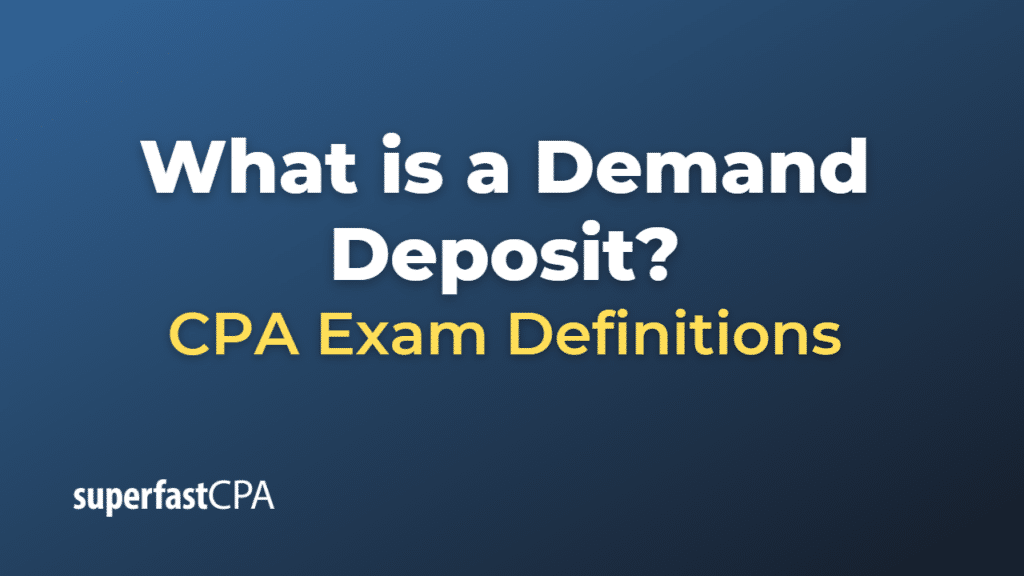Demand Deposit
A demand deposit is a deposit of money in a bank account from which funds can be withdrawn at any time without any notice to the bank. This contrasts with a time deposit, such as a certificate of deposit (CD), which requires the depositor to leave the money in the account for a set period of time.
Checking accounts and savings accounts are the most common types of demand deposit accounts. They are very liquid and can be used for daily transactions such as paying bills or making purchases. The bank customer can withdraw funds from a demand deposit account through various methods such as writing a check, using a debit card, making an electronic transfer, or withdrawing cash at an ATM or bank branch.
Because demand deposits are so liquid, they are also counted as part of the money supply in an economy. In the United States, for example, demand deposits are part of the M1 definition of the money supply, which also includes currency in circulation and other types of highly liquid accounts.
Banks use the funds deposited in demand deposit accounts to make loans to other customers, which is how they generate a large part of their income. This process is regulated by banking laws and regulations, which require banks to keep a certain percentage of deposits on hand as reserves to ensure they can meet their obligations to depositors.
Example of a Demand Deposit
Imagine you just got your paycheck and you deposit it into your checking account at your bank. This is a demand deposit. The bank now holds your money, but you can access it at any time.
Let’s say the total deposit was $2,000. Here are some things you might do with it:
- You could write a check for $500 to pay your rent.
- You might use your debit card at a grocery store to buy food, spending $200.
- You might go online and make an electronic payment of $300 to pay your utility bill.
- You could go to an ATM and withdraw $100 in cash.
In all of these cases, you are utilizing the demand deposit feature of your checking account: you can demand your money at any time, in any amount up to the total you have deposited, without notifying the bank in advance.
At the same time, the bank might use the rest of your deposited money to give a loan to another customer, earning interest on it. This is how banks make a profit: they pay less interest on deposits than they earn on loans. But they also have to maintain sufficient reserves to ensure they can meet all their customers’ demands for their money.













